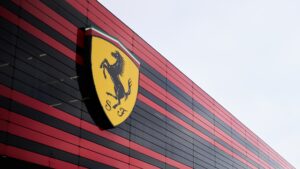Ferrari’s Bold Move: Price Hikes Amid New Tariffs – What Investors Should Know
As the automotive world continues to evolve, luxury brands like Ferrari are feeling the ripple effects of economic changes. In a strategic move, Ferrari announced on Thursday that it will implement a price increase of up to 10% on select models post-April 1, 2023, citing new U.S. auto tariffs. This decision, which could add an astonishing $50,000 to the cost of a standard Ferrari, marks a significant moment in the luxury automotive market.
The Details of the Price Increase
The iconic Maranello-based sports car manufacturer indicated that prices would remain stable for all vehicles imported before April 2. Notably, the "commercial terms" for three prominent model families—the Ferrari 296, SF90, and Roma—will not see changes. However, more in-demand models, including the stunning Purosangue SUV, the 12Cilindri, and the exceptional F80, will experience increases.
For instance, prepare to pay $43,000 extra for a Purosangue, which starts at around $430,000. For the ultra-exclusive F80, with a starting price exceeding $3.5 million, the hike translates to more than a staggering $350,000.
This move follows President Donald Trump’s recent announcement imposing a 25% tariff on vehicles not produced in the U.S. Interestingly, Ferrari is in a unique position as it produces all its vehicles at its Maranello factory, thus sidestepping some of the immediate impacts that could challenge other automakers.
Implications for Sales
With Ferrari having produced 13,752 cars last year, the question arises: How will these price hikes affect sales? Current indications suggest that demand remains strong, with most models already on a waiting list exceeding a year. Presently, the clientele for Ferrari vehicles typically encompasses high-net-worth individuals who are likely capable of absorbing these additional costs.
Notably, Ferrari’s CEO, Benedetto Vigna, recently indicated a balanced approach in responding to these new tariffs. "We have to respect our clients," he emphasized in a CNBC interview, reinforcing the importance of customer relations even in a competitive luxury market.
Financial Outlook
Even with the implementation of these price increases, Ferrari has reiterated its commitment to its financial targets for 2025, although it acknowledges potential risks of 50 basis points to profitability margins. Indeed, Ferrari is not just another luxury brand; it’s a status symbol intertwined with impeccable engineering and marketing prowess.
The luxury car market operates differently than the mass automobile market; the influence of tariffs could be less impactful for brands like Ferrari. Luxury buyers tend to view these price adjustments as minor compared to their overall expenditure.
A Look Ahead
As Ferrari gears up to launch its first all-electric model this October, the company is positioning itself for future success while still navigating today’s challenges. While the demand remains robust, new electric models will likely attract a fresh clientele and potentially offset any sales risks posed by the pricing strategy.
Ferrari’s choice to raise prices is not just a financial decision—it’s a testament to the brand’s strength and adaptability in the luxury space. Investors should keep an eye on the ongoing demands and consumer sentiments in this segment, as they will play crucial roles in shaping Ferrari’s future trajectory.
For deeper insights into market trends and investment strategies, stay tuned to the Extreme Investor Network. We’re committed to delivering this kind of valuable content that helps you stay ahead in a rapidly changing business landscape. Subscribe to our newsletter for the latest updates directly to your inbox!

